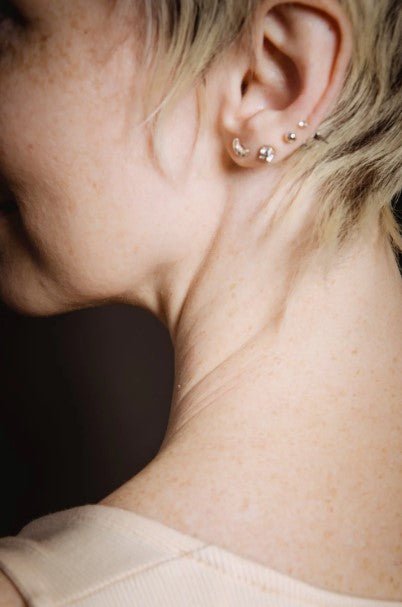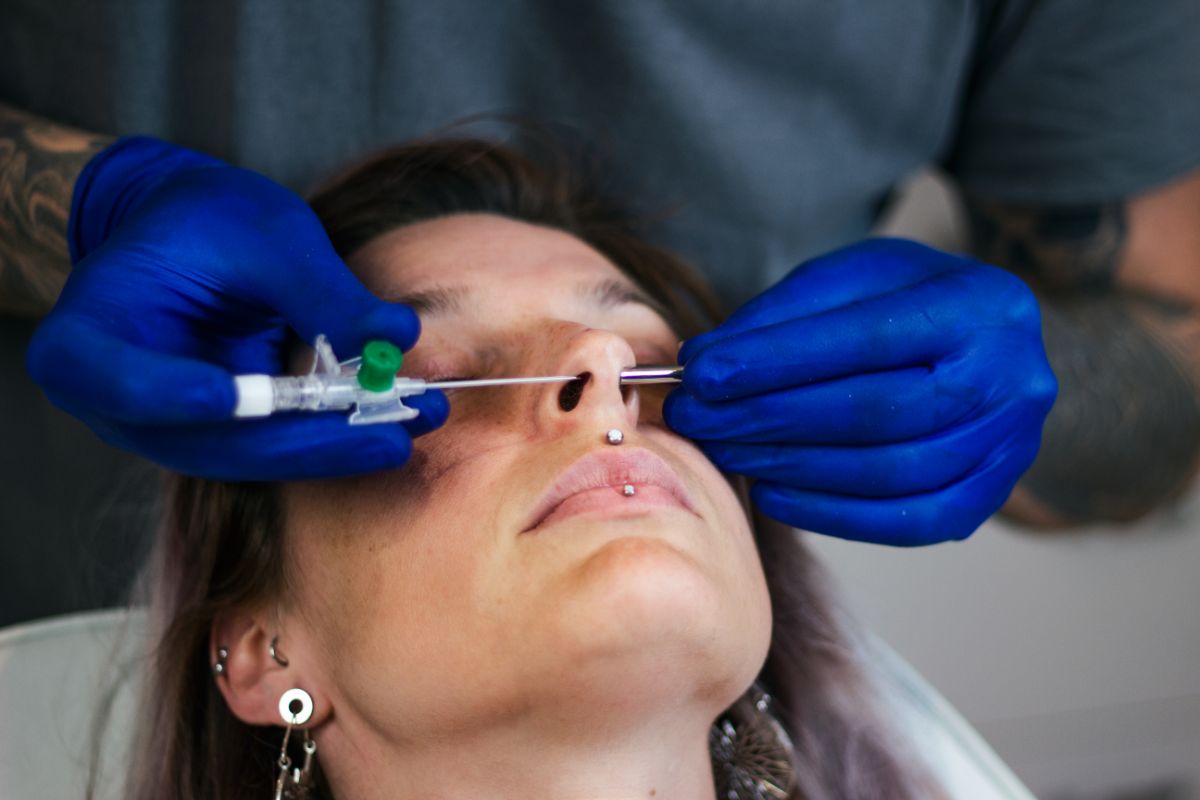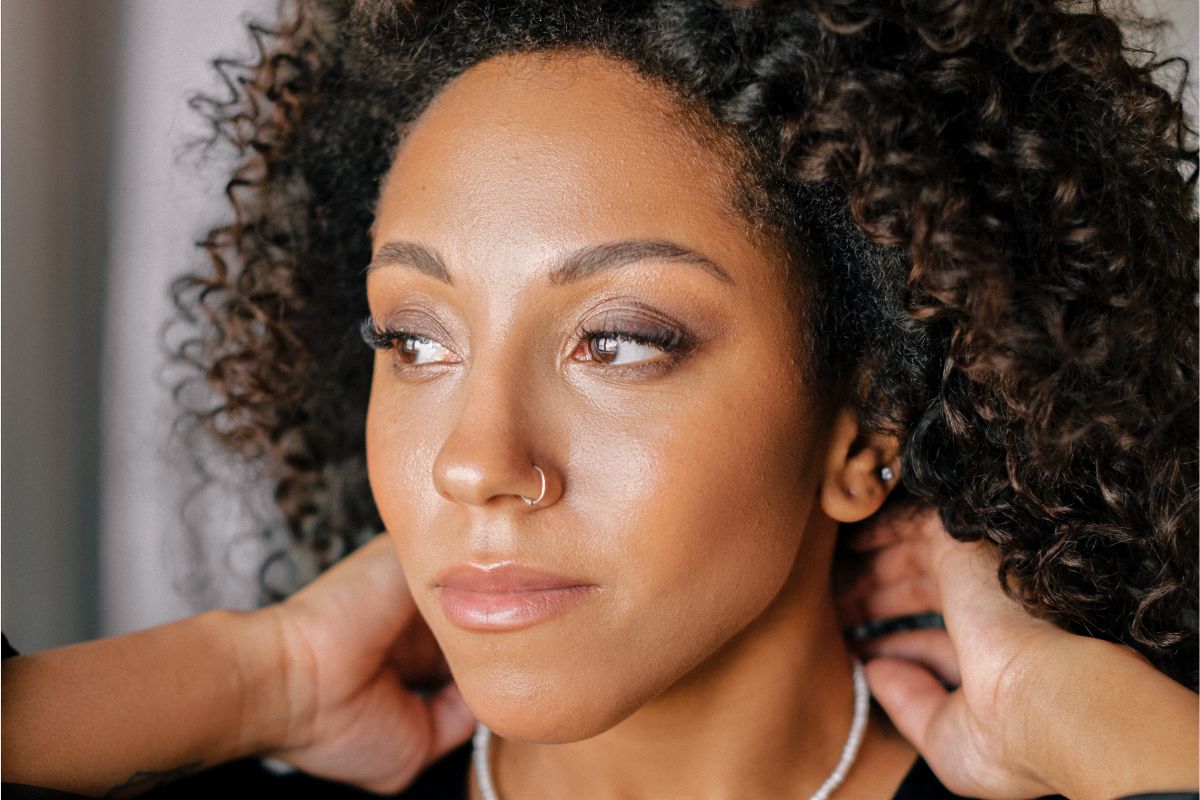Lots of people believe that ear piercings are a waste of money. Often, they also believe that they are extraordinarily painful (at worst, only for a second!). If you're on the fence about getting your first ear piercings, you may not realize that ear piercings can benefit your health.
While licensed piercers are not trained as acupuncturists, the structure of the human ear and ear acupuncture has seen some degree of study in Western medicine for over two centuries. Depending on what type of ear piercing you choose, you may be able to find some relief from health conditions like migraines, anxiety, or even back pain.
This article provides a brief overview of five different types of ear piercings that not only look amazing but could also help you feel better.
Daith Piercing
The points of the Daith piercing are at the left and right sides of the curved cartilage closest to the head, right above the ear canal. When you wear the appropriate jewelry in this piercing, this increases the pressure on the associated acupuncture point and may result in decreased migraines or anxiety.

Conch Piercing
Conch piercings are gorgeous — and a bit different — because of the unique placement and the spiral shape it creates on the ear. For this type of piercing, the needle either goes through the middle of the ear (for an inner conch piercing that lets you wear a stud earring of your choice) or the outer edge of the ear, which will allow you to wear a hoop earring.
When you wear a stud or ring in a conch piercing, it activates a pressure point in the middle of the ear. This pressure point may encourage muscle relaxation in the spine and lower back. In addition, this pressure point remains connected to the lumbar and thoracic vertebrae.
Rook Piercing
Unlike other piercings, the rook piercing benefits women because it may reduce menstrual pain and cramps. A rook piercing is a cartilage piercing done in the uppermost area of the ear, near the rim.
In short, this piercing is on the pressure points connected to digestion, elimination, and the uterine muscles.

Tragus Piercing
The tragus piercing is a fantastic way of communicating your energy with others. It makes people look strong, confident, and active.
As per the name, it's the perforation of the tragus of the ear, which is the small, thick flap that partially covers the ear's opening. Anecdotal evidence suggests that piercing the tragus stimulates the vagus nerve and reduces migraines.
Helix Piercing
The helix piercing generally sits along the top edge of the ear, right up next to the outer ear's ridge of cartilage.
If the piercing is at the 10 o'clock angle, the pressure point in this area can influence the parts of the brain that trigger stress and disturb the sleep-wake cycle. Additionally, a piercing at the 12 o'clock position may be helpful for people with allergies.
Final Thoughts and a Disclaimer
History is full of stories about the power of piercings. For instance, it's a common saying that pirates had their ears pierced with jewels of gold to improve their eyesight while sailing. Whether this is true or not, wearing titanium or low-karat gold is highly recommended to prevent infections at the site of your piercing. In case of severe infections, consult your doctor.
Lastly, while acupuncture points in the ear have been a focus of study, the benefits of triggering pressure points in the ear have never been scientifically verified, conclusively, as an effective treatment for the conditions discussed in this article.
However, anecdotal evidence can be found, and piercings may help some people with certain conditions. So, if you're considering getting any of the five piercings we've covered in this article, you might find they give you some relief from anxiety, migraines, or muscle pain.





